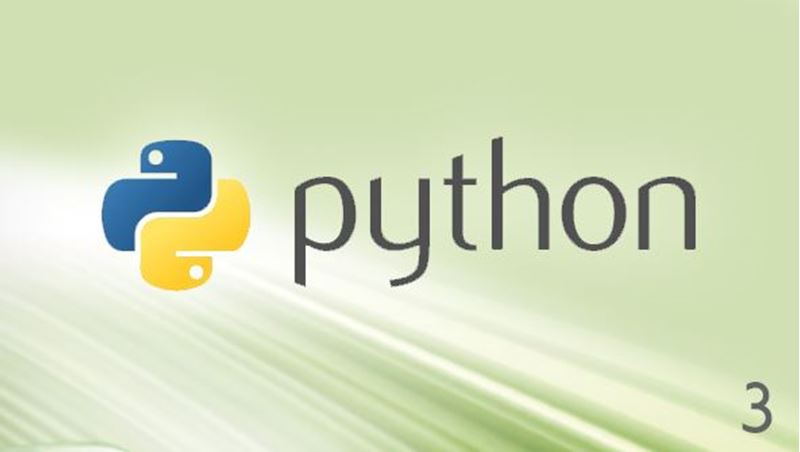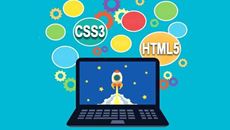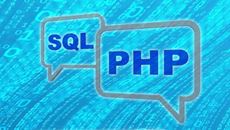- Delivery Method Online
- Professional Certificate
- 24hrs Suggested Study Time
- 3 Months Access
- Tutor Support
- Study On Any Device
- 1077 Students
Python 3 Programming Fundamentals

Enhance your resume by adding Python to your programming skills.
Enhance your résumé by adding Python to your programming skills! The Python programming language was developed to provide a way to develop code that's easy to create and understand. While Python contains the same basic structures as other languages, it also offers unique functionality that makes your life as a programmer easier.
This course will show you how to create basic programming structures including decisions and loops. Then you'll move on to more advanced topics such as object-oriented programming with classes and exceptions. In addition, you'll explore unique Python data structures such as tuples and dictionaries. You'll even learn how to create Python programs with graphic elements that range from simple circles and squares to graphical user interface (GUI) objects like buttons and labels.
Whether you're interested in writing simple scripts, full programs, or graphical user interfaces, this course will give you the tools you need to use Python with skill and confidence.
Courses are delivered to you through expertly executed lessons, online instruction and interaction with like-minded students. Our courses are designed to deliver all of the benefits of studying in a classroom whilst giving you the flexibility to study at a time and place to suit your needs. You can access your classroom 24/7 from any device with an internet connection.
This course has a 3 month duration. You'll complete comprehensive lessons, quizzes and assignments before submitting your final exam at the end of the course to achieve your certificate. Courses must be completed within the 3 month access period.
ordion">
Two things that make Python attractive are that it's a free download and that it comes with a free development environment, IDLE. In our first lesson, we'll start off right by going on a brief tour of both the language and the environment. You'll see that with IDLE, you can either execute individual statements directly at the interpreter's prompt or save your commands in a program file to be run later. By the end of Lesson 1, you'll be fully prepared to work in IDLE using either method.
Programs aren't terribly useful unless you have some way to store values in memory. In Lesson 2, you'll get up to speed with Python variables, and then you'll learn how to use these variables to get input from the user. With this, you'll be able to write Python code to make your programs interactive, making them more useful and a lot more interesting.
There are many times when you'll want one set of statements run in one situation and another set run in a different situation. For that, you'll need to use Python's if decision structure. In Lesson 3, you'll practice with Python's if syntax and learn how to write both simple and complex conditions to select which statements should be run.
Keeping with the theme of programming structures, today's lesson is all about the repetition structure. You'll learn how to write both while and for loops in Python so that your statements can be repeated over and over until some condition is met. You'll also learn some looping features that are unique to Python that help to make your programs more powerful.
Modular programming gives you the ability to write code once, give it a name, and then call on it by name at a later time. In Lesson 5, you'll learn how to write modular programs by creating functions. You'll also learn how to pass data into the functions and then to return values back, building on this knowledge as you proceed through the course.
Building on the concept of modular programming, next we'll explore object-oriented programming. This is a popular technique, and in Lesson 6, you'll get an introduction to how it's done in Python. You'll learn how to create a class definition and place variables and functions inside. Then later, you'll use this class to create some objects and work with them to solve simple problems.
It's now time to take some of the topics we've covered and apply them to something a little more creative. Today, we'll explore Python graphics, where you'll create and work with simple shapes and even get a chance to write programs that simulate animation so that you can watch your shapes move across the screen.
Now that you're comfortable with the decision and repetition structures, as well as ways to organize your code, it's now time to turn to ways of managing your data. In this lesson, we'll look at two of Python's basic data structures: lists and tuples. You'll learn how to create these types of variables and use them to manage data for your programs.
While lists and tuples are useful structures, they put the burden on you to keep track of your data's position within the structure. However, the dictionary structure gives you the ability to associate a word with each piece of data. In this lesson, you'll learn how to use dictionaries to write useful programs in fewer lines of code that'll execute in a shorter amount of time.
Learn At Your Own Pace
We believe in personalised learning. That's why we provide all the tools and support you need to succeed at your own pace. With flexible learning, you'll stay motivated and retain more information. Plus, you can balance your studies with work and family commitments to make your dreams a reality.
We Won't Break The Bank
Education should be accessible to anyone who wants to learn. That's why we offer some of the most competitive prices in the industry with payments plans for just $25 per week. Investing in your future is a smart choice and doesn’t have to break the bank.
Industry-Led Courses
There's no better way to learn than from experts with years of experience in your field. That's why each of our 200+ industry-led courses are designed to give you a real-life perspective on your industry. With our expert mentors, you'll learn from people who have a wealth of knowledge and experience, and who are passionate about sharing it with you.
Get The Personal Support You Deserve
At Vibe Learning, we're real people who are dedicated to providing you with personal support every step of the way. Our industry experts are not only professional and knowledgeable but also incredibly passionate about sharing their expertise with you. With their guidance, you'll gain invaluable insights and practical knowledge to help you succeed.
Still looking?
Check out the following courses related to Ruby Programming Fundamentals:




